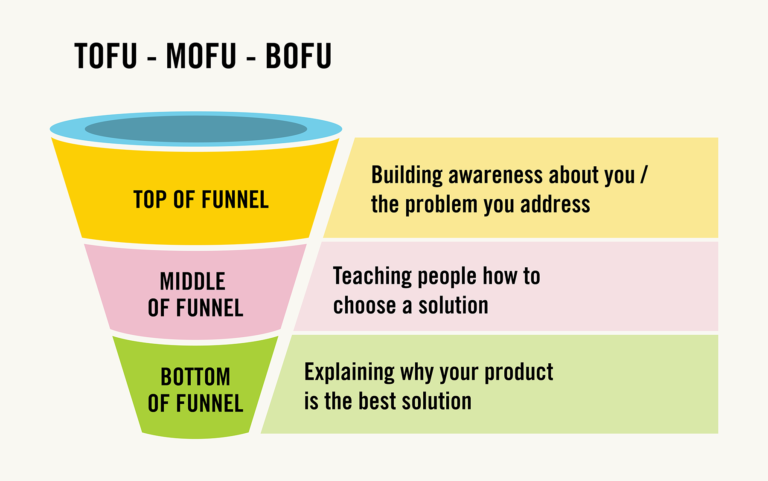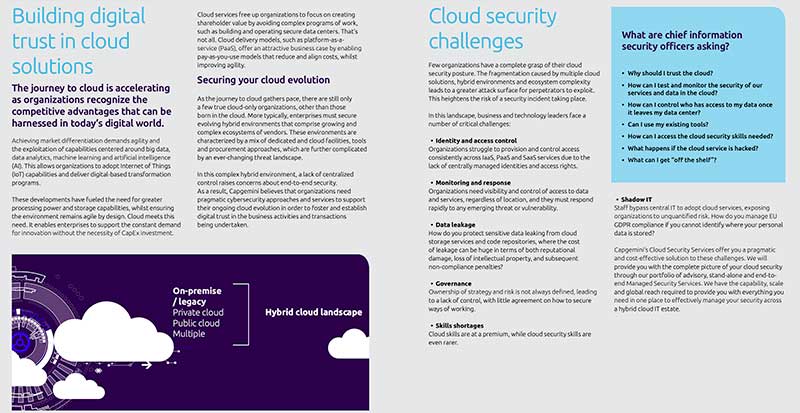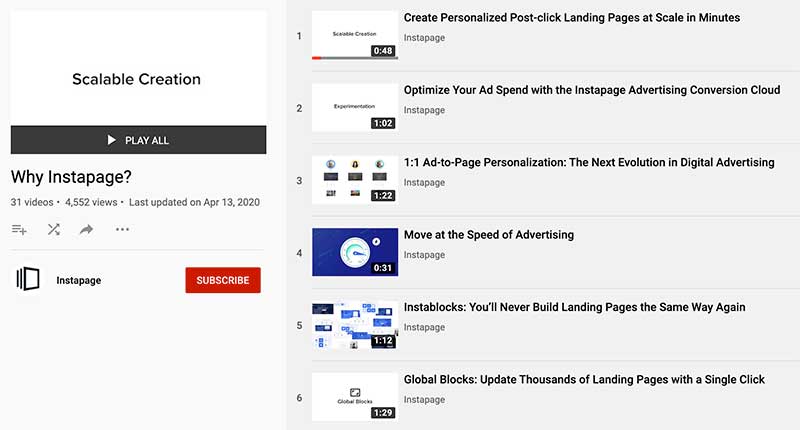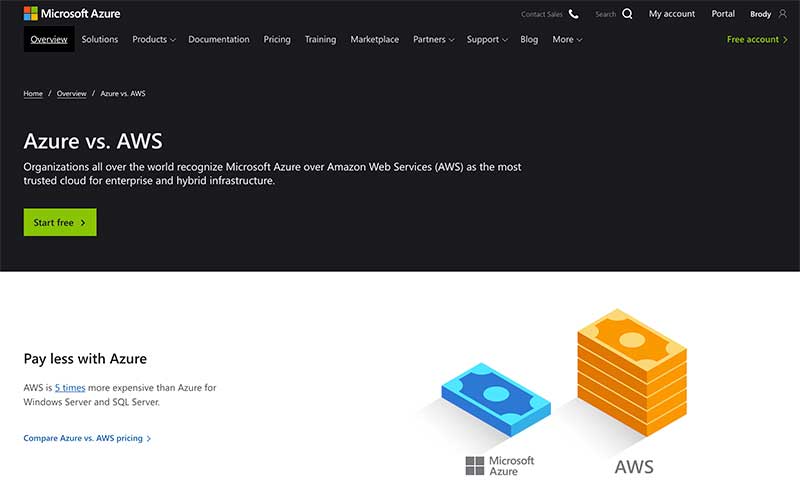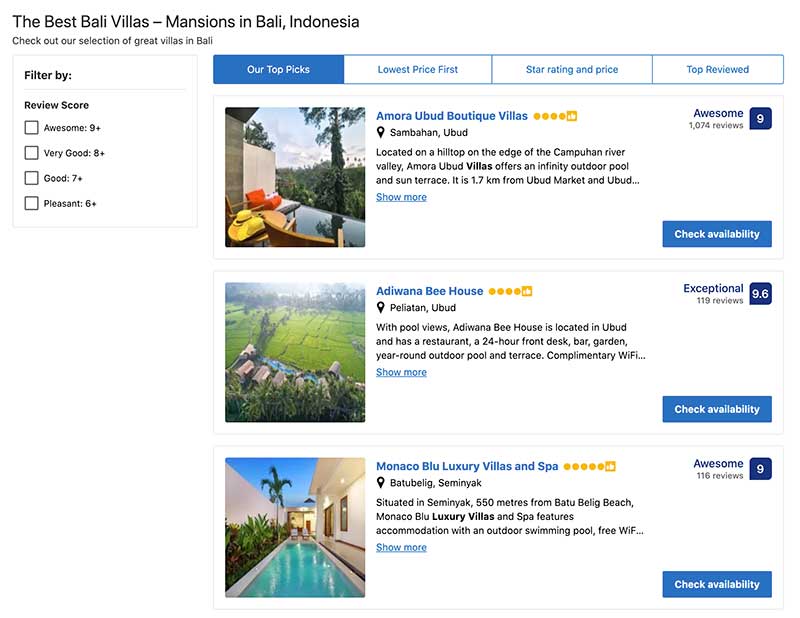The marketing industry is evolving as consumers grow wearier of traditional outbound strategies. A whopping 78% of buyers turn to content to find out more about a brand, and 70% feel that personalized content indicates a company’s desire to build a relationship with its customers.
When you consider those stats, two things become clear. First: Content truly is king, and if you aren’t seriously invested in it, you’re missing out. Second: You can’t just toss out content randomly to everyone in your target audience, hoping something will stick.
You need a content strategy, and it needs to target customers at each stage of the customer’s journey. Enter the content marketing funnel.
It’s intimidating to build a content marketing funnel for the first time, but once you get the process down, you’ll reap the benefits of incorporating it into your strategies. Let’s dive into creating your first funnel.
Build a Content Marketing Funnel Tailored to the Buyer’s Journey
The funnel for content marketing reflects the stages of the buyer’s journey and considers how and why prospects consume content at each phase. As a quick refresher, the three core stages and purposes are:
- Top of the funnel (TOFU): This is the awareness stage. Your target audience is looking for a solution to a problem or an answer to a question. It may be the first time they have had exposure to your brand.
- Middle of the funnel (MOFU): During this journey phase, prospects are interested in what you have to offer. They evaluate your products or services and consider buying. MOFU content provides in-depth product information and highlights why your brand is better than others.
- Bottom of the funnel (BOFU): At this point, your audience is ready to make a decision, and you’ve made it on the shortlist. Now, it’s time to drive home what makes your product superior and why they should trust your brand.
We all engage in marketing intending to eventually drive sales. To accomplish your brand’s objectives, your content needs a purpose, which is why you should build a content marketing funnel.
The content funnel helps you know what kind of content to produce to target your audience at each stage of their journey.
Image Source: FutureLearn.com
TOFU: Craft Content That Increases Awareness
Consumers at the top of the funnel are just beginning their journey. They spend time gathering information and educating themselves. They may not know what they want to buy or even if they want to buy anything yet. This is the wide end of the funnel — the awareness stage.
At this point, you want to build brand awareness and authority and increase search engine visibility. When you build a content marketing funnel, your TOFU goal is to give your target audience general information that will help them to learn more about topics related to their interests and pain points.
For example, a user at the awareness stage might seek information on removing pet hair from upholstery. They may be a new pet owner who just learned that their pet sheds a lot. Their inexperience leads to a lack of knowledge about caring for furry couches, carpets, and newly laundered and ironed work clothes.
At this stage, they’re just looking for tips, and you’re looking to generate leads.
If you’re selling vacuum cleaners, a blog post offering potential solutions can initiate brand awareness and bring them to your website. Your suggestion that they might consider a vacuum cleaner designed to pick up pet fur also makes them aware of useful products that solve their problem.
TOFU Content Sources and Types
As you build a content marketing funnel, keeping in mind that awareness content traffic usually comes from search engines and social media informs what content to craft for this stage. This type of content includes:
- Blog posts
- Social media posts
- Infographics
- Webinars
- eBooks
- How-to videos and guides
- Checklists
Some of these require a significant time investment, but they are powerful tools for capturing prospects. According to an ON24 study, 76% of marketers indicate that webinars help them generate leads.
However, blogs are not as resource-intensive and are great for audience engagement and brand awareness.
The Audible blog contains a range of round-up posts suggesting audiobooks on themes, such as “must-listens for aging millennials,” that are not only highly shareable on social media but also introduce the reader to Audible’s digital services.
Don’t be afraid to think outside the box to explore less obvious but cost-effective options, such as digital brochures, postcards, and press releases.
Capgemini’s brochure about cloud security services includes detailed advice about the benefits of cloud security and reasons you should consider the firm for your security needs.
TOFU Tips
Here are five tips we’ve found helpful when you are building a content marketing funnel:
- Know your buyer personas
- Keep your content evergreen
- Do your keyword research
- Optimize content for search engine visibility, following SEO best practices
- Underplay brand promotion
Your content should increase brand awareness without scaring off prospects with hard-hitting sales tactics. Though ads can be effective at this stage, you should focus more heavily on optimizing content for organic traffic.
TOFU Metrics
To evaluate the success of your awareness content, conduct performance analytics using the following metrics:
- Engagement on your website and social media accounts
- Traffic, including organic and referrals
- Email subscriptions and new social media follows
As you evaluate content performance, don’t forget to pay attention to unsubscribes, bounces, and unfollows.
MOFU: Deliver Evaluation-Oriented Content
The middle of the funnel is the consideration and evaluation stage. By the time users reach this stage, they have a clearer idea of what they’re actually looking for.
They often begin searching for more detailed information on specific features and benefits and comparisons of different products. As you build a content marketing funnel, focus on content that delivers more in-depth information.
If we pick up our pet owners from the TOFU stage, they may decide that they really need a new vacuum cleaner. If they start researching different models to decide which product suits their needs best, they’ve entered the MOFU stage.
They now need more detailed information to help them understand what kind of vacuum cleaner works best for pet owners. An in-depth product review or comparison can educate them about the features they need in a vacuum cleaner and why yours works better than others on the market.
MOFU Content Sources and Types
At this point, you need to keep them engaged with your brand by delivering content with more details about particular solutions. As you build a content marketing funnel, include content for this stage that educates your target audience, such as:
- In-depth reviews
- Case studies and comparisons
- Webinars
- How-to videos and guides related to your product
- Newsletters
You’ll want to stay current with social media posts as well. They keep your name in front of your target audience and provide an excellent venue for posting videos and blog snippets.
No matter what type of content you put out there for MOFU prospects, be sure to highlight features that set your brand apart from the competition.
The landing page creation tool Instapage has a playlist of YouTube videos called “Why Instapage?” that demonstrates why their product outperforms their competitors.
Microsoft provides persuasive information for those comparing Azure and AWS.
MOFU Tips
Keep in mind these four tips as you build a content marketing funnel:
- It’s OK to self-promote here.
- Use a clear call-to-action.
- Continue to optimize your content.
- Repurpose TOFU content, modified for the MOFU crowd.
During this funnel stage, users may return to search engines several times and conduct several searches to help them with their purchasing decision. These individuals actively seek information and may be comparing different vendors or service providers.
MOFU Metrics
To assess content performance at this stage, analyze the following metrics:
- Engagement on your website and social media accounts
- Leads and conversions
- Time on page
- Click-through-rates on your CTAs
If your audience bounces from your content, unsubscribes from your newsletters, or leaves your webinar, you may need to revisit the substance of your content.
BOFU: Generate Content That Drives Home Brand Value
If you’ve held onto your prospect for this long, you’re close to getting the sale. At the bottom of the funnel, you aim to convert your prospects into buying customers.
You’ve been shortlisted. Your prospects now just need that extra nudge, the reassurance that they can trust your brand and products or services. When you build a content marketing funnel, plan for content at this stage that drives home the value your brand provides.
Our diligent pet owner is ready to decide on a vacuum cleaner. They are desperate to get their furry family member’s hair off their couch, but they also want to know that the investment they are about to make is a good one. A few testimonials give them that reassurance.
BOFU Content Sources and Types
By now, your prospects are familiar with your brand. They have likely visited your website or social media platforms more than once.
They may have a few more specific questions, but they often mostly want proof. You can give it to them in the form of:
- Customer reviews
- Testimonials
- User-generated content
- Pitch decks and sales emails
- Comparison tables
- Demos
Reviews are critical at this stage, as 98% of consumers count on them when making purchasing decisions.
Booking.com targets web users looking for villas in Bali by titling a list of available properties as “The 10 Best Bali Villas” and providing buttons for direct booking. Their list also includes customer ratings and reviews.
You may also want to help prospects cross the finish line by including bonus offerings or free trials.
Backup service provider Backblaze encourages sales for customers landing on their homepage with several CTAs offering free trials and a bonus of extra storage.
BOFU Tips
When you build a content marketing funnel, follow these tips for BOFU prospects:
- Drill down on your audience’s needs and pain points.
- Personalize content whenever possible.
- Alleviate any potential reservations and objections.
Make sure you test different versions of your content to see which ones drive more conversions.
BOFU Metrics
The most obvious metric at this final stage of the buying is sales, but you should also measure demo requests, free trial sign-ups, and the return on investment for your content marketing efforts.
Content Marketing Funnel Considerations
Remember, not every customer will start at the wide end of the marketing funnel and work their way through to purchasing in a linear fashion.
Some people will spend a long time in the earlier stages of the funnel and never progress to becoming paying customers. Others will jump straight to the purchase stage.
However, crafting content specifically designed for each stage of the funnel and users’ needs at each stage gives you the best chance of nurturing your audience through the funnel and converting them into customers.
Taking a stage-specific approach with your content strategy also ensures your day-to-day content planning efforts will be more targeted, a bonus for the effort you put into building a content marketing funnel.
Time To Build a Content Marketing Funnel
Conducting extensive audience research is the first step in building a successful content marketing funnel. Only when you understand your audience can you successfully craft content to meet their needs.
We recommend creating audience personas to represent different segments of their market to ensure you craft content tailored to your audience at each stage of the buyer’s journey. Conduct research using social media, web analytics, customer databases, and competitors to develop your personas.
To ensure you have enough content for each stage of the marketing funnel, sketch out potential journeys for each of your audience personas. Note the ways they might find your content, as well as possible questions and stumbling blocks.
For example, a user might Google some general questions to find information, land on one of your blog posts, click through to read more of your site, sign up to your mailing list, return to your site from a link in an email, and eventually make a purchase.
Going through this process for as many potential audience journeys as you can think of ensures you have the information you need to create suitable content for every stage and avoid any gaps that may cause prospects to leak out of your funnel.
Keep Track of Your Content After You Build a Content Marketing Funnel
As you might imagine, with multiple personas and hundreds of possible customer journeys, ensuring you have content for every potential need can become quite a task to manage. It makes sense to use a content marketing platform to help define your content strategy, identify gaps, and ensure your content covers your entire content marketing funnel.
Divvy’s platform provides a central hub for your entire content operation, providing access to everything your teams need from one dashboard. Our content calendar makes it easy to keep track of all scheduled content campaigns and assets, including the audience, buyer stage, and topics on which each asset is focused.
We securely store your content with attached metadata, making it easy for you to keep track of the content you create after you build a content marketing funnel. Request a demo to learn more about how Divvy helps your teams stay organized.
